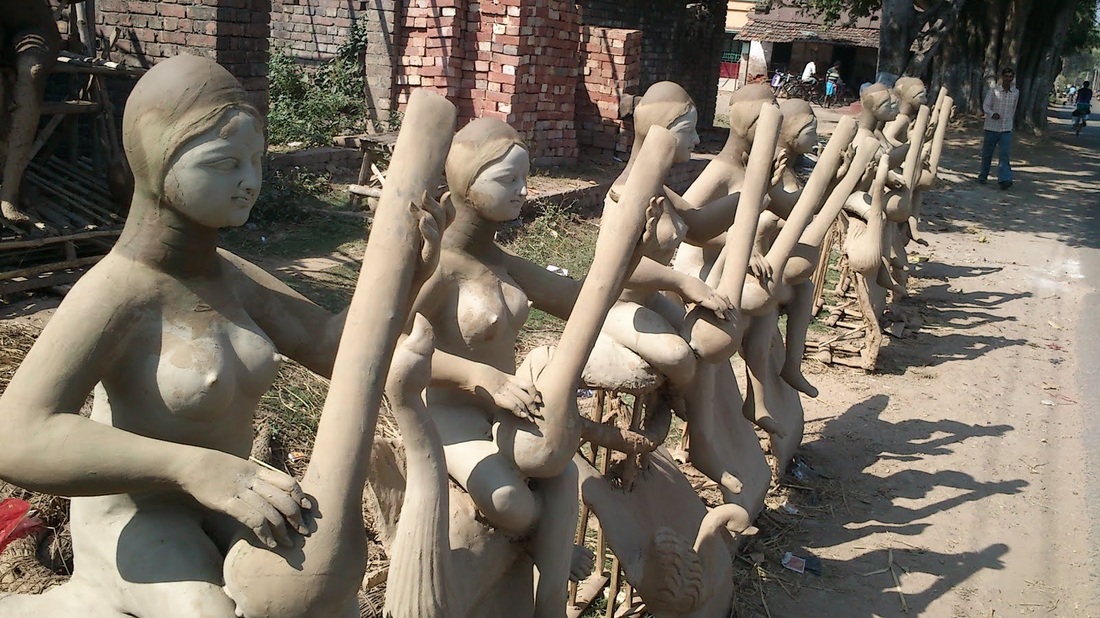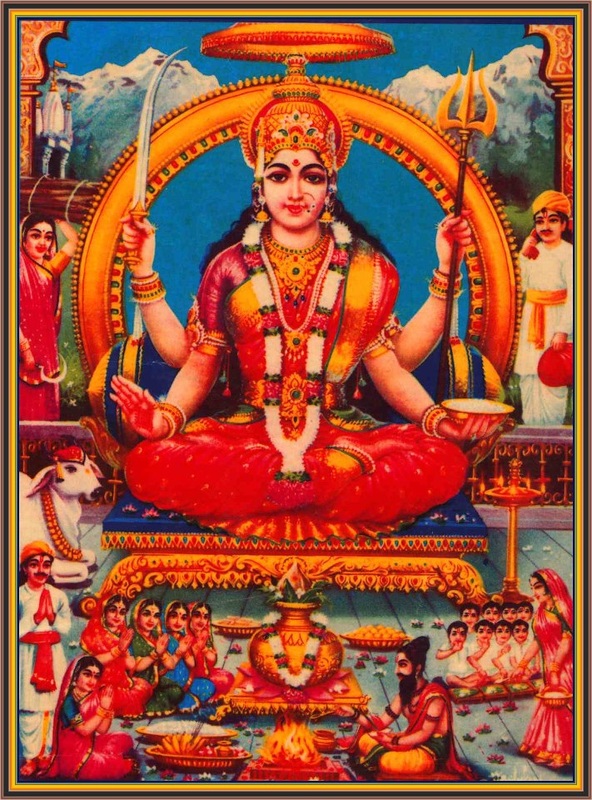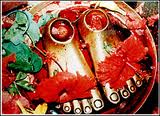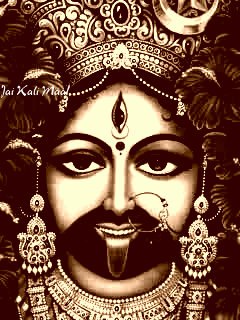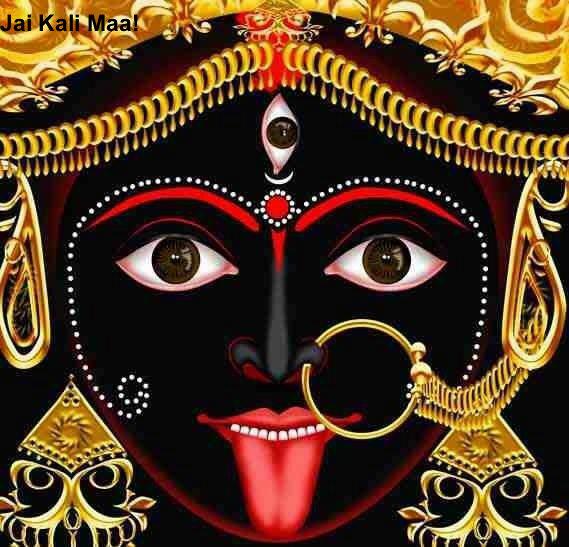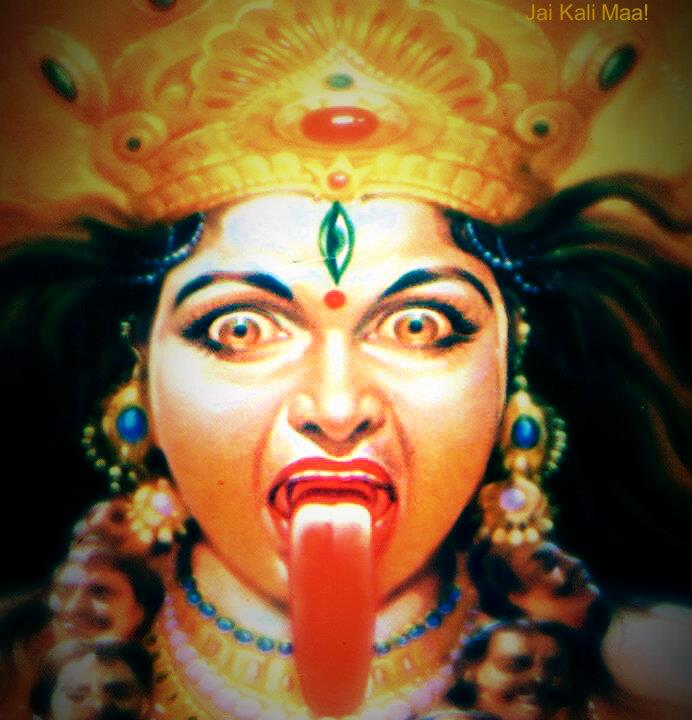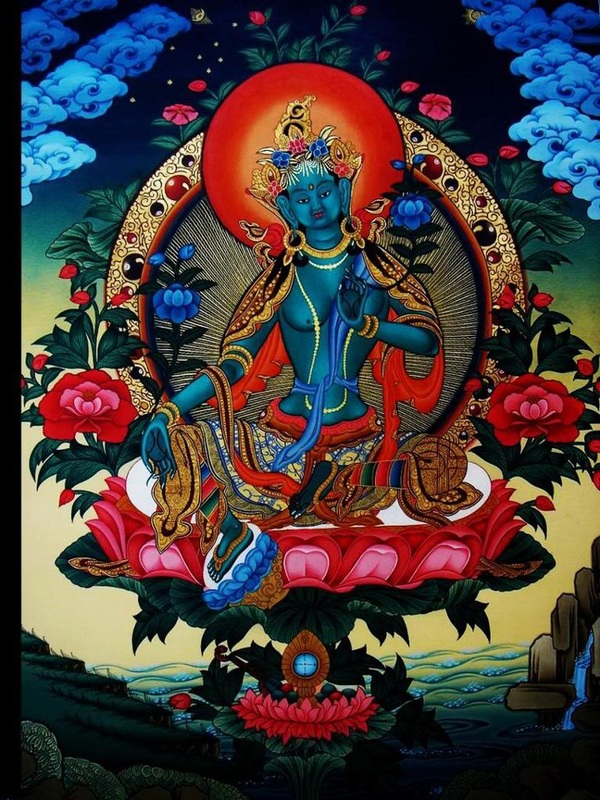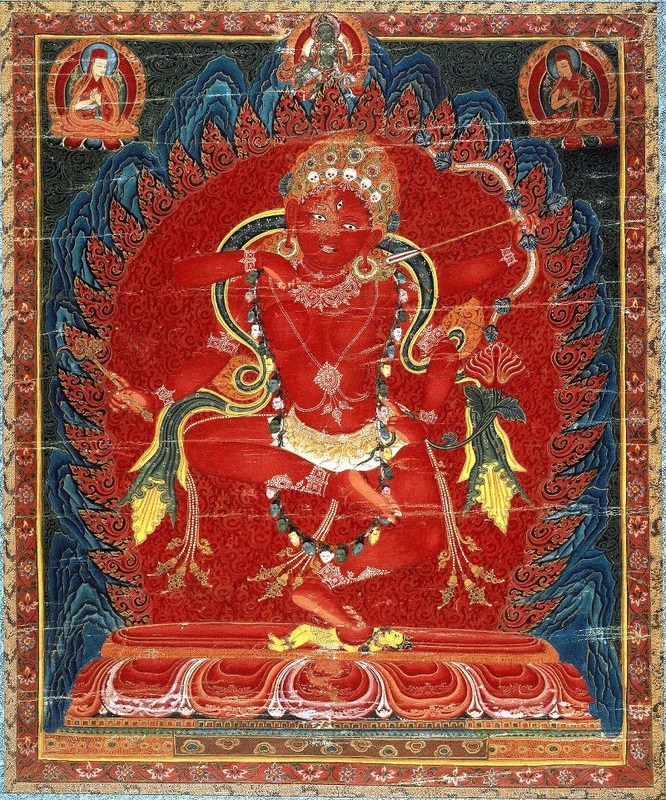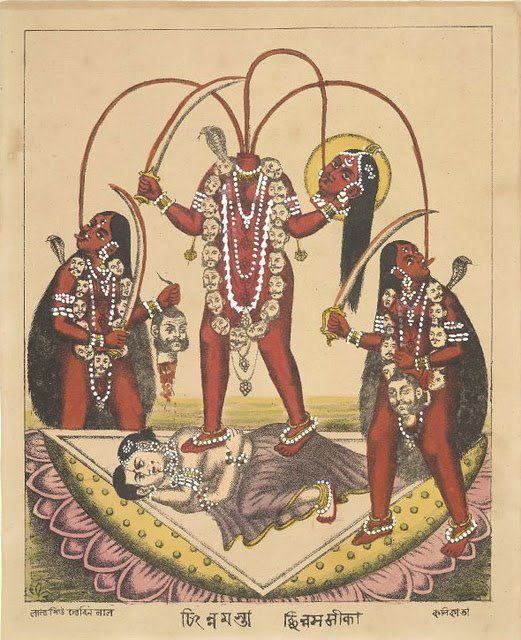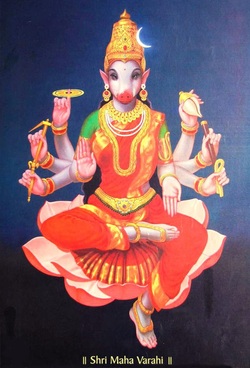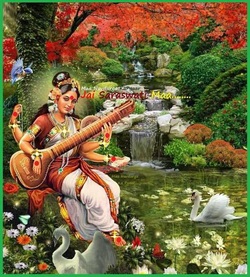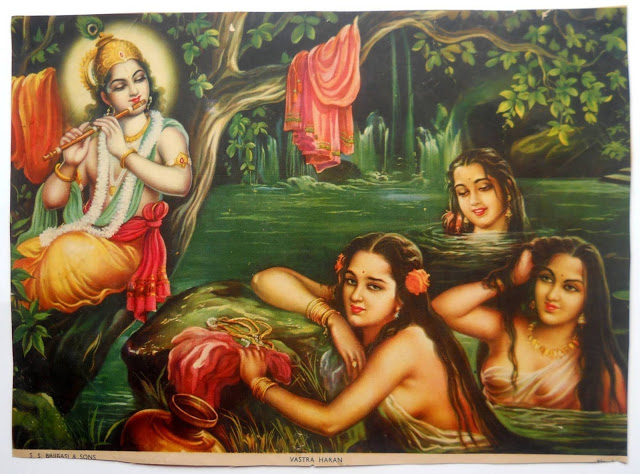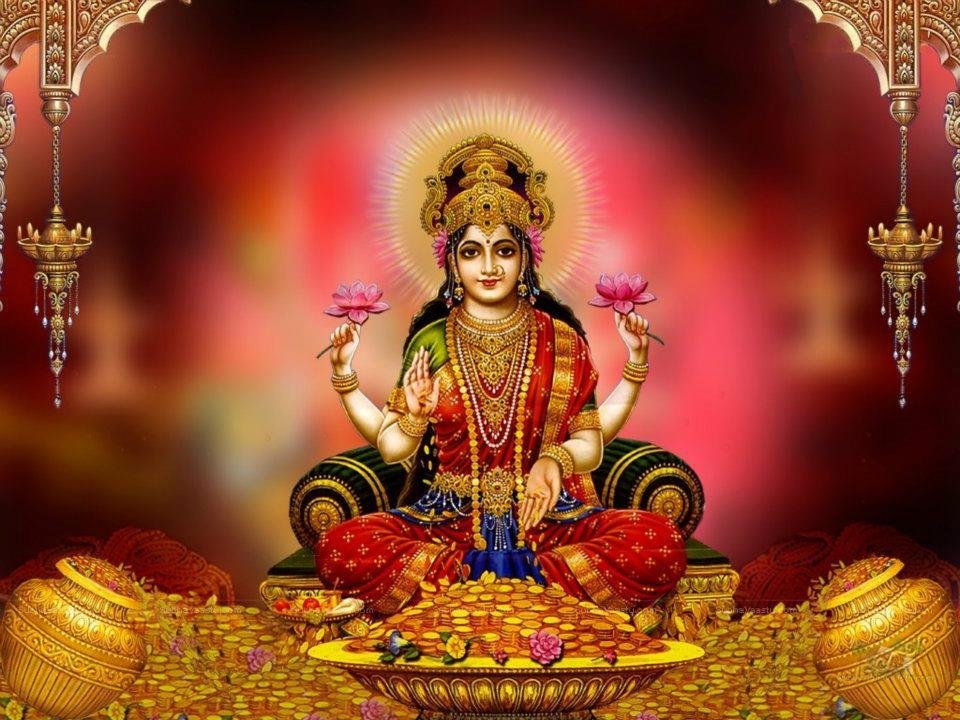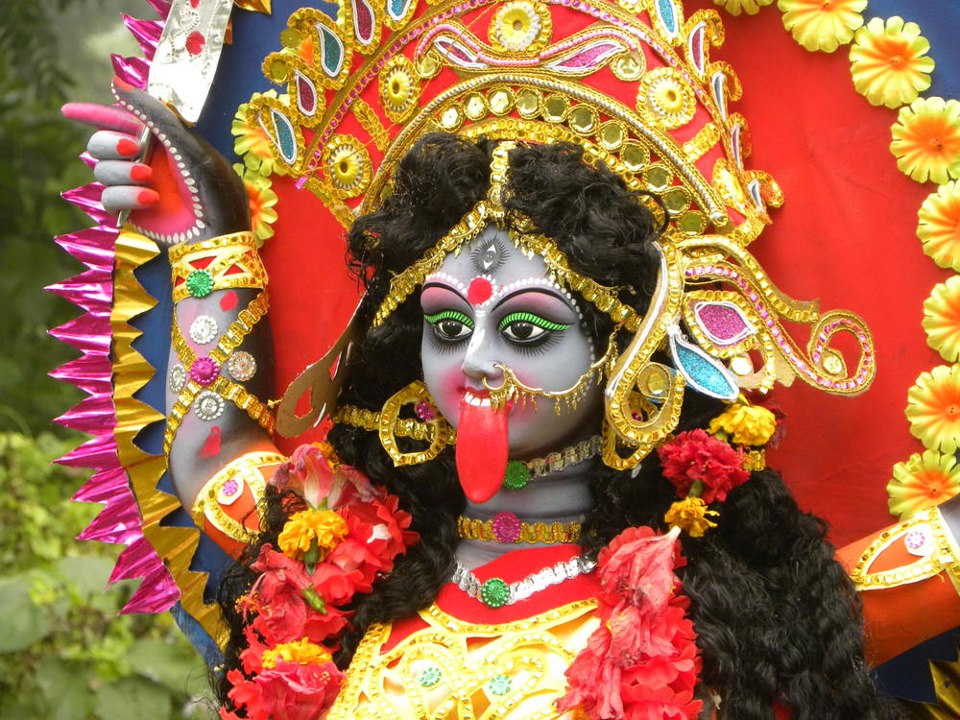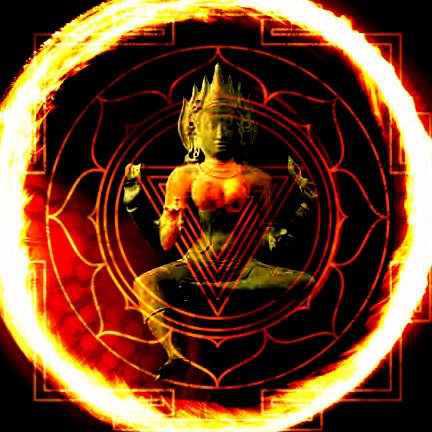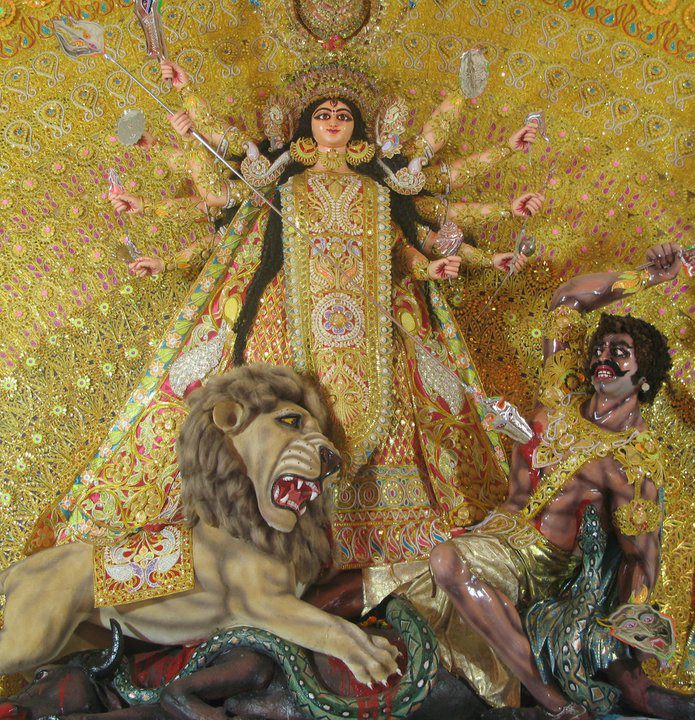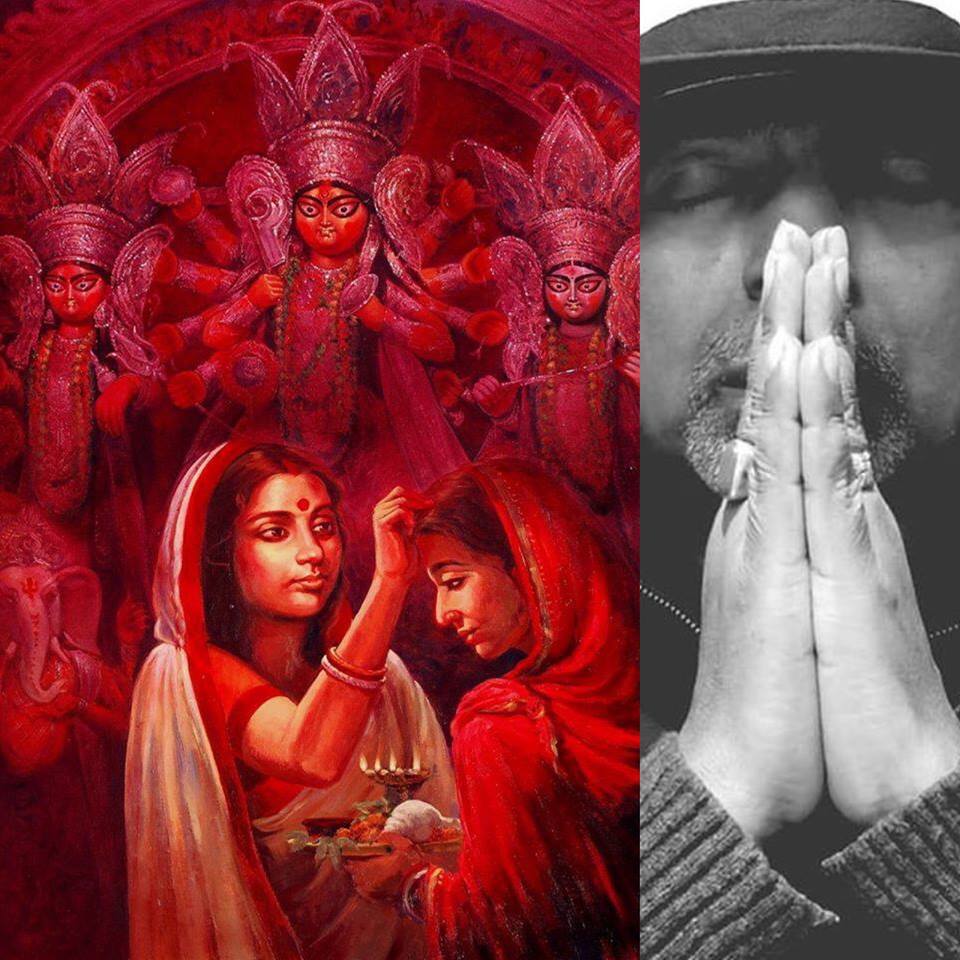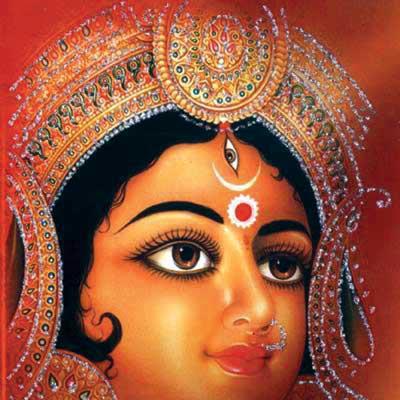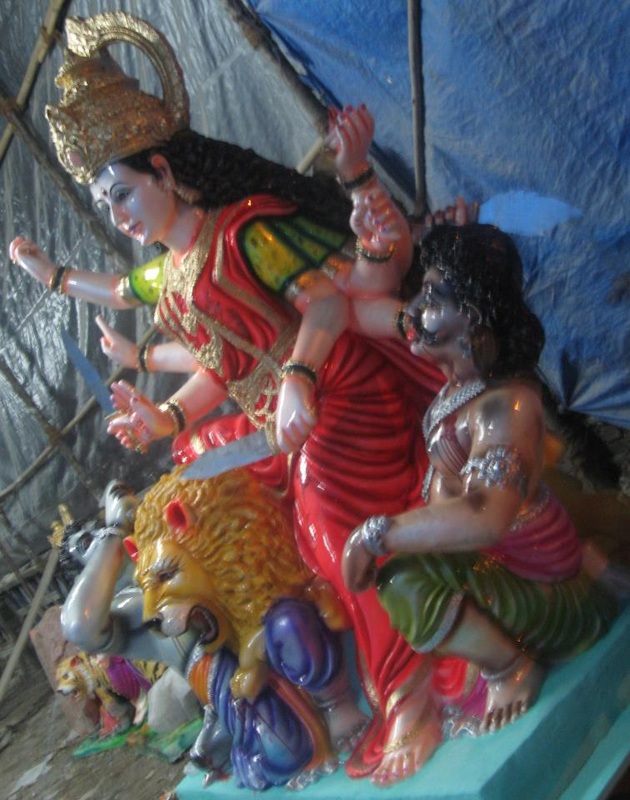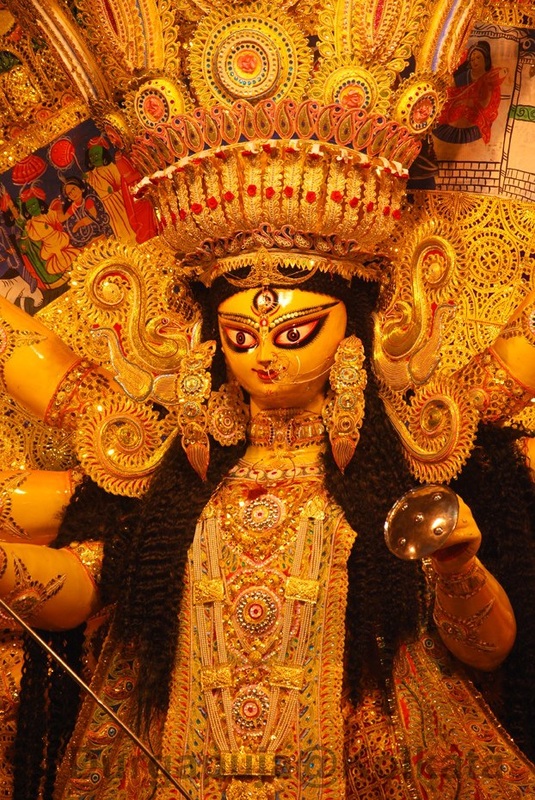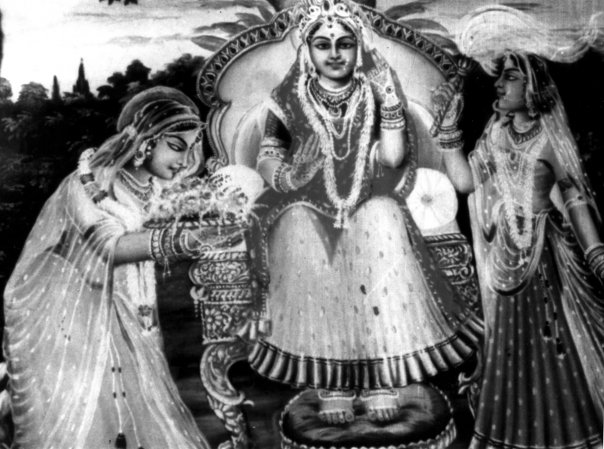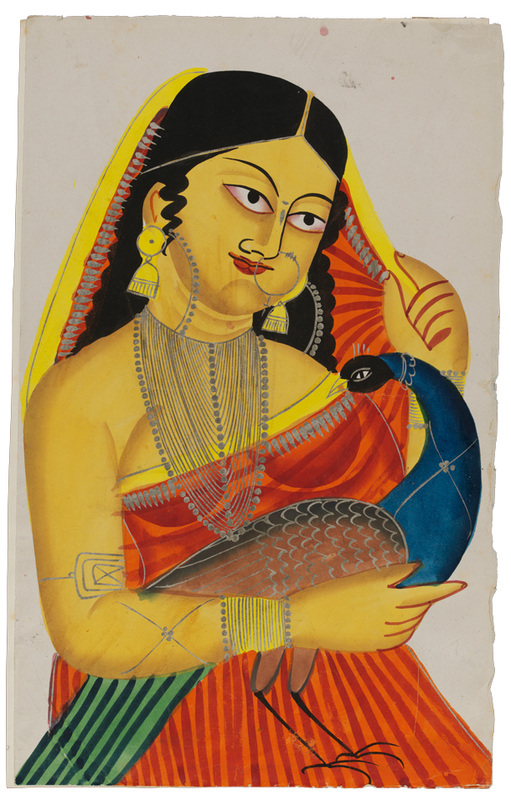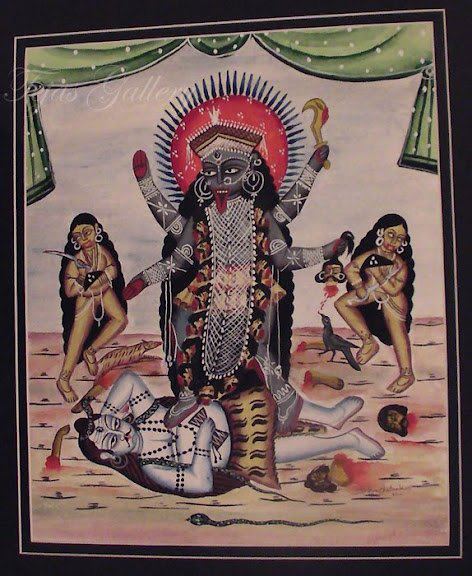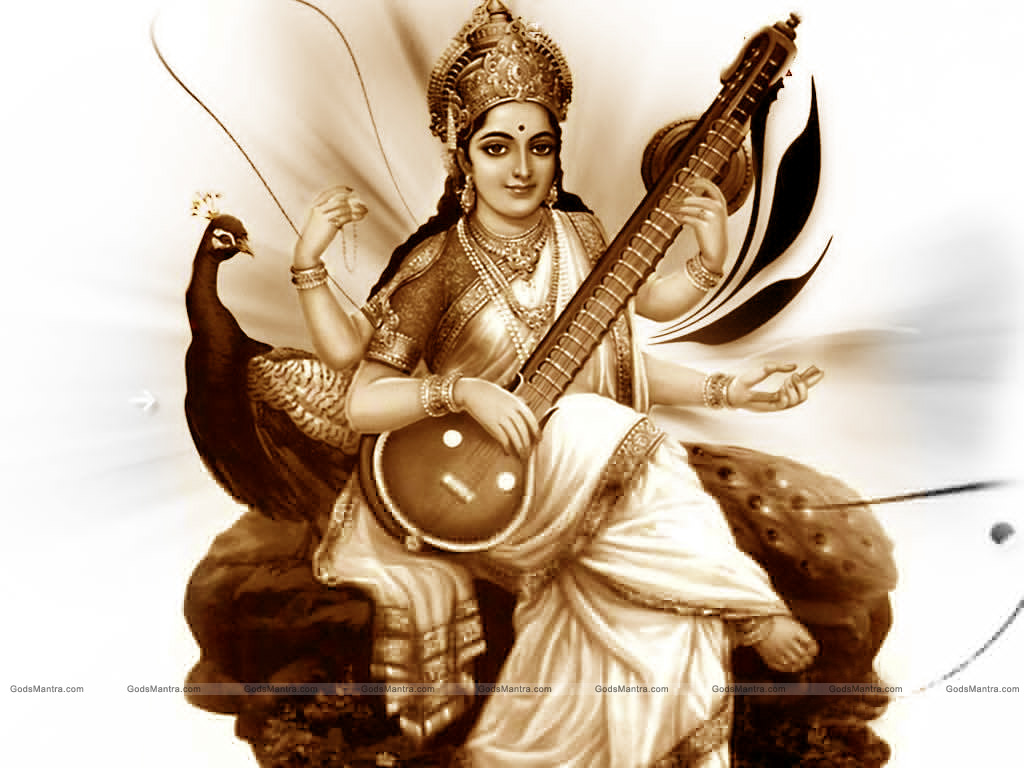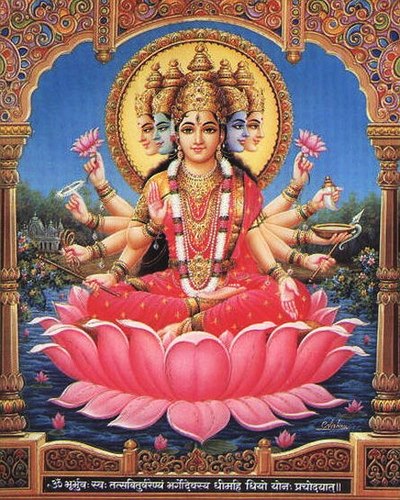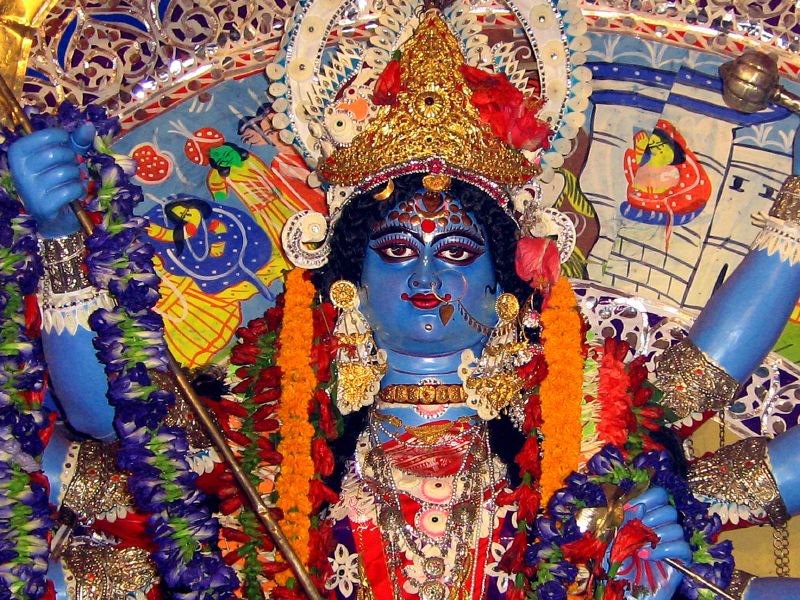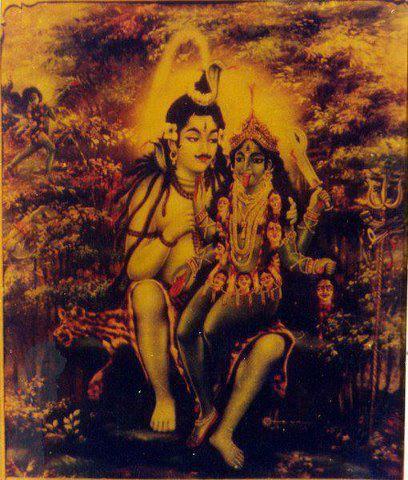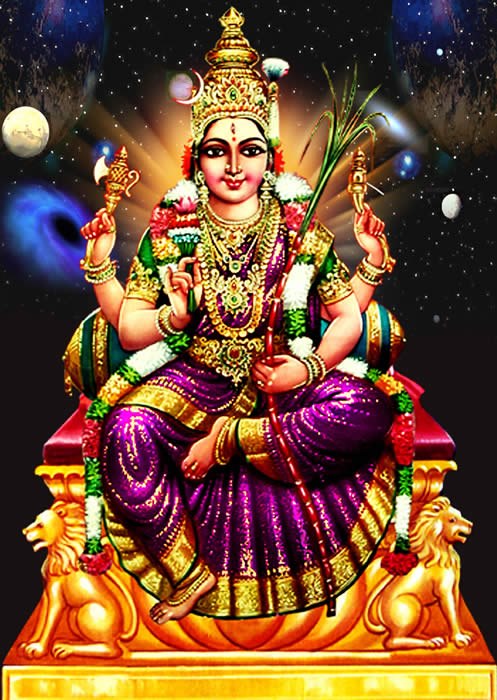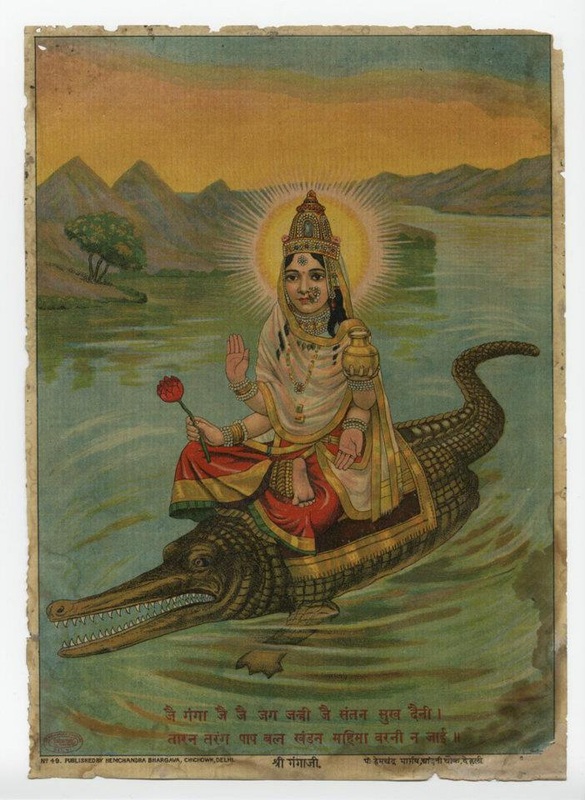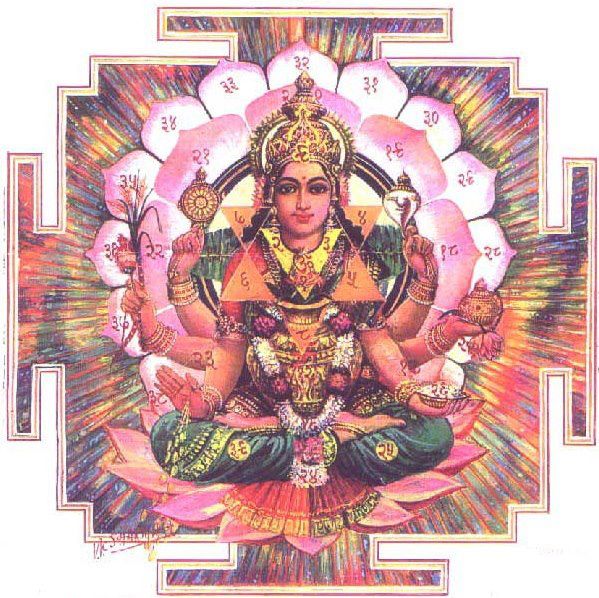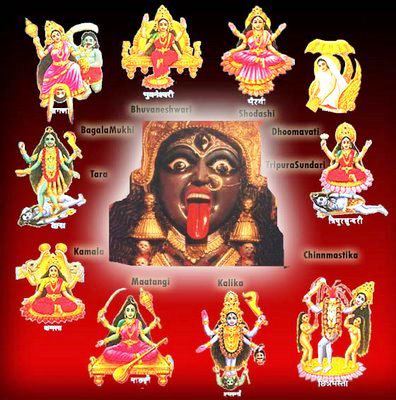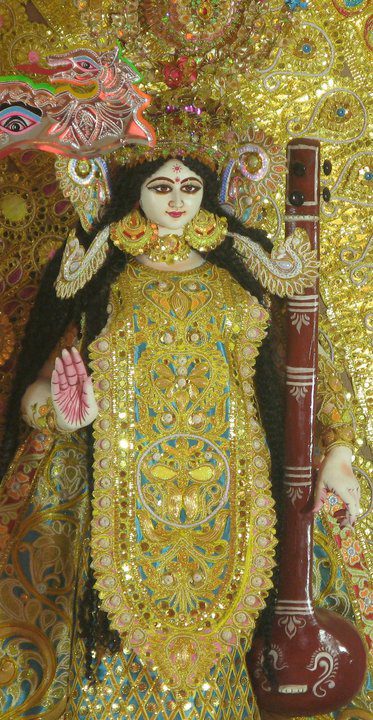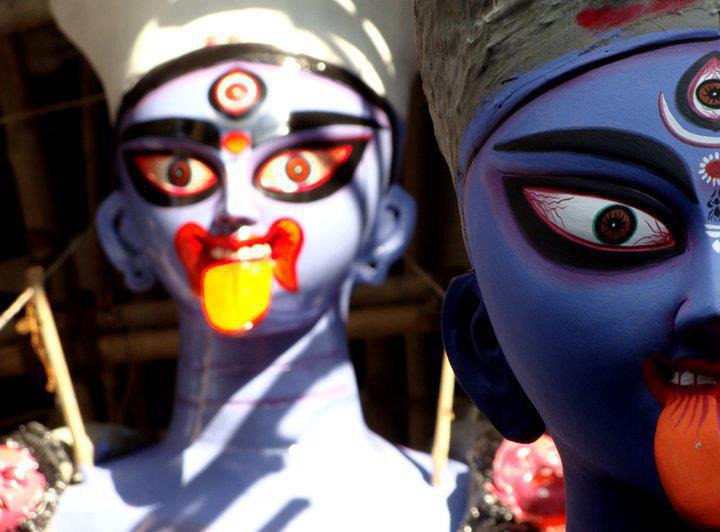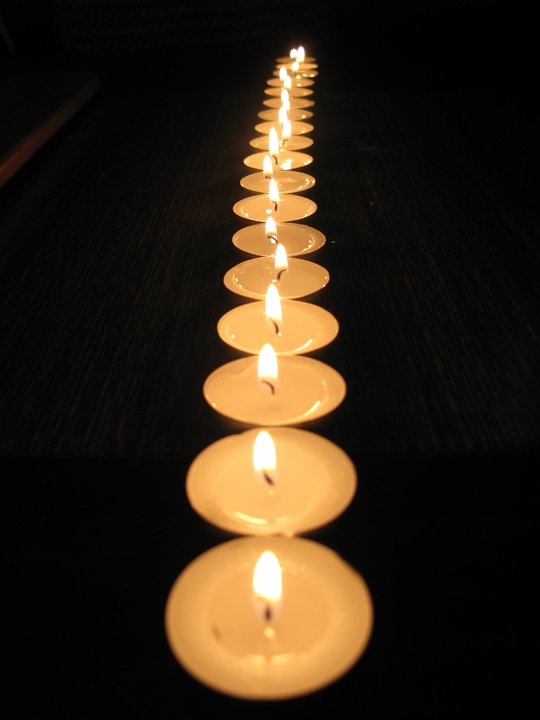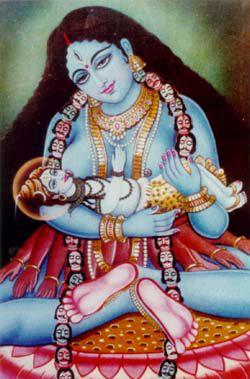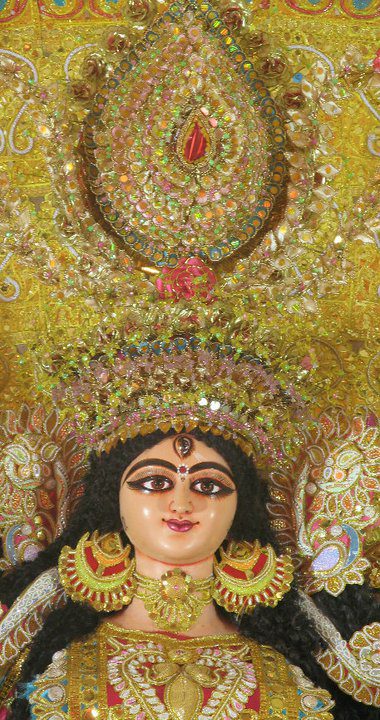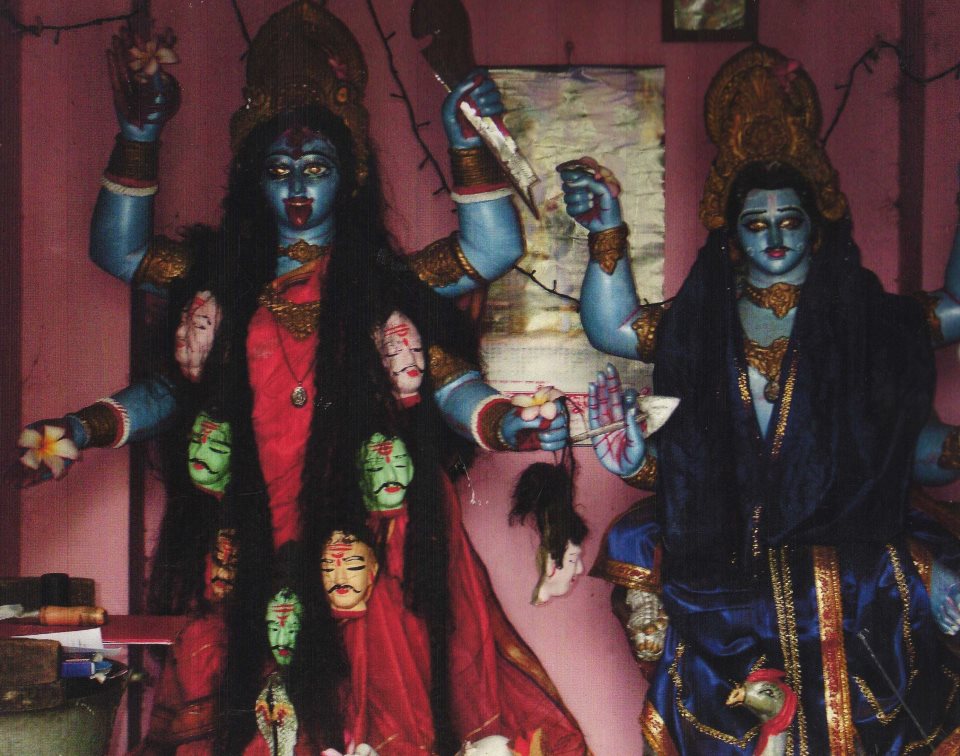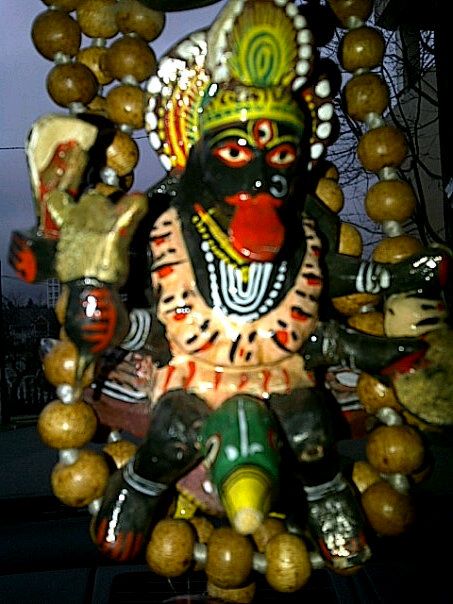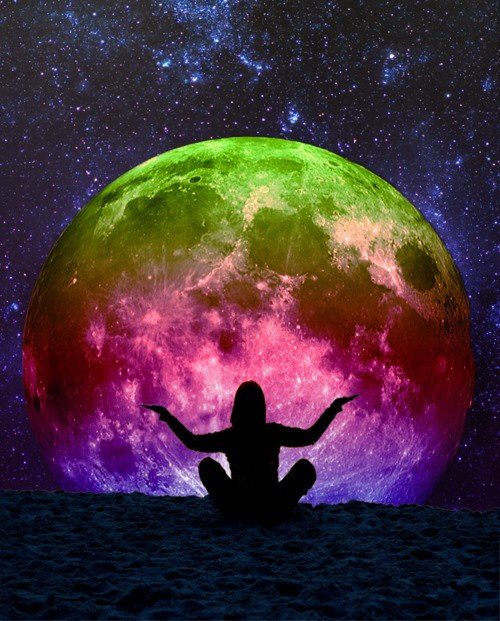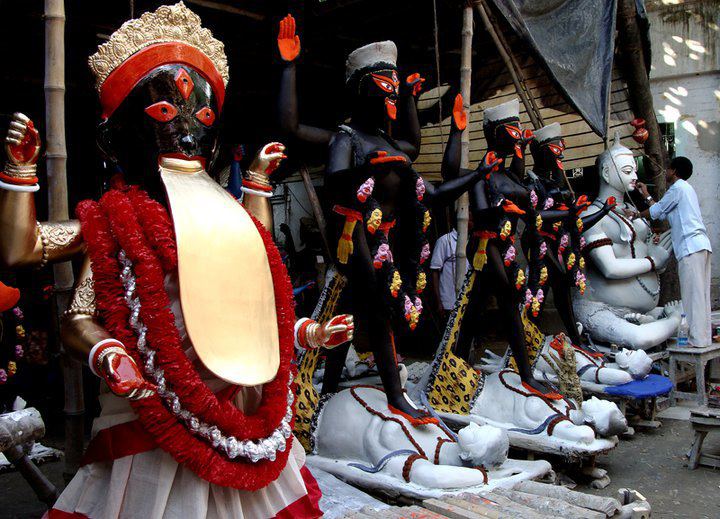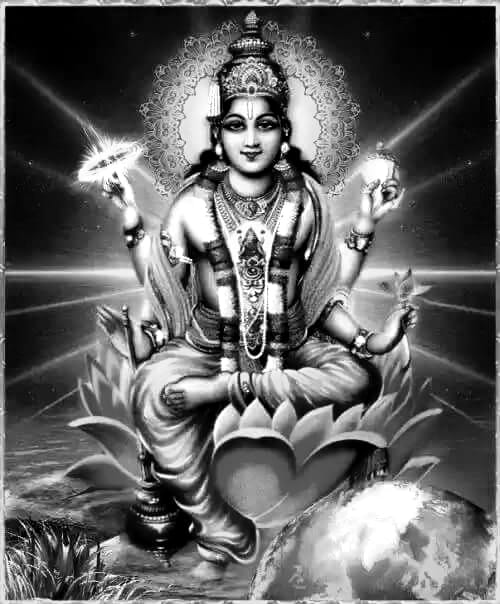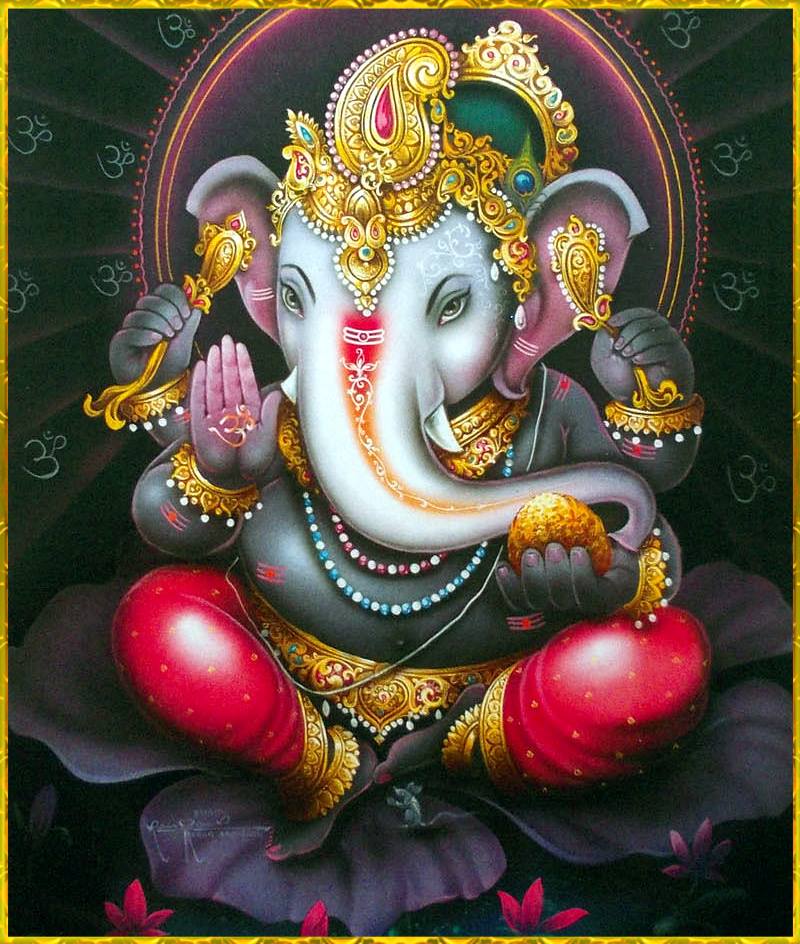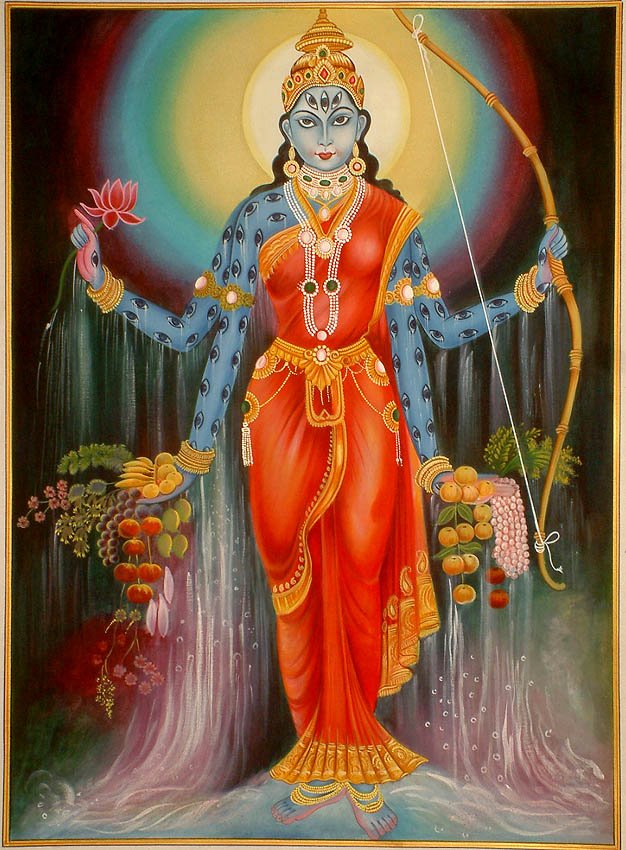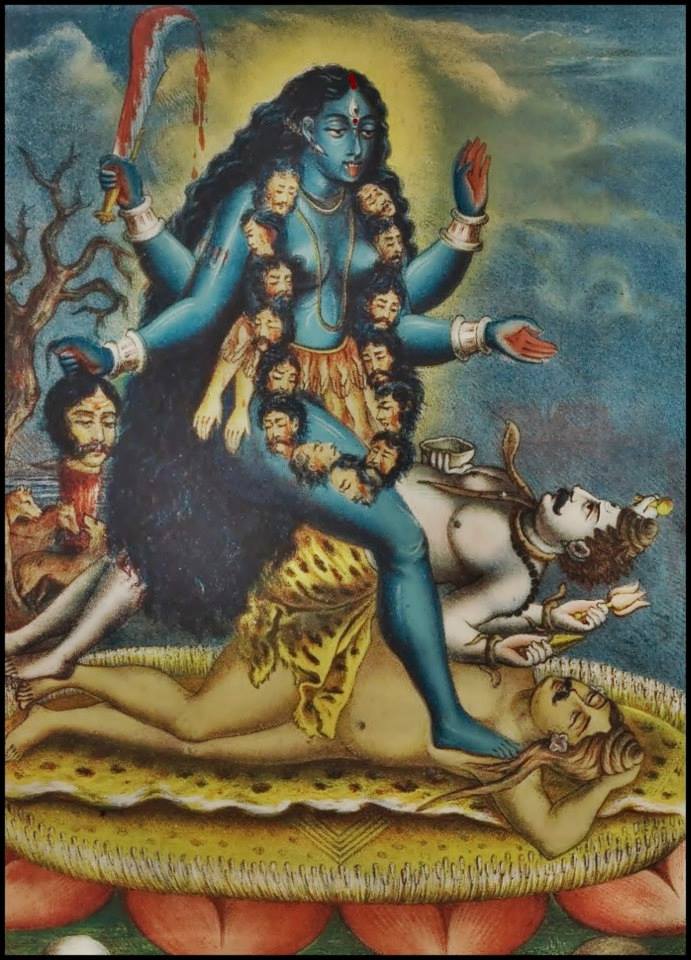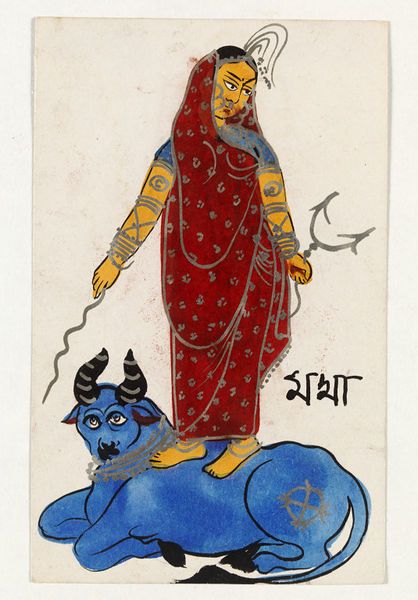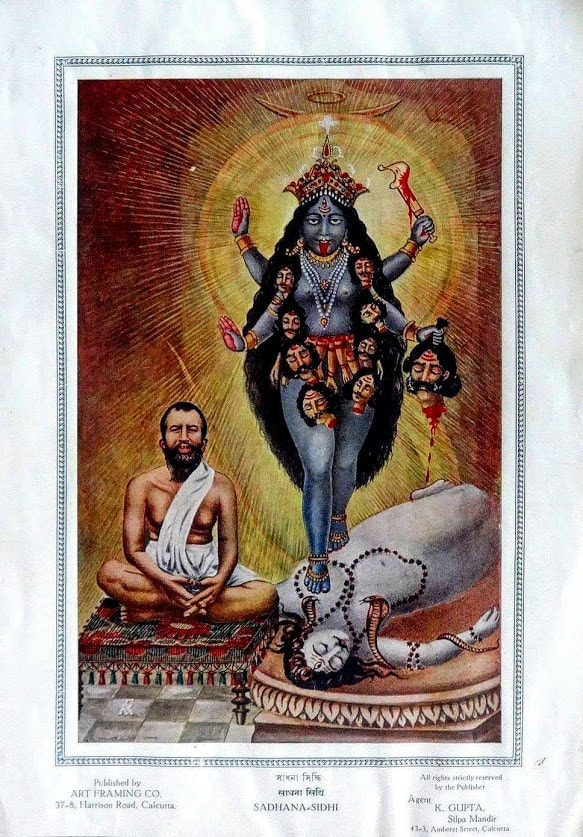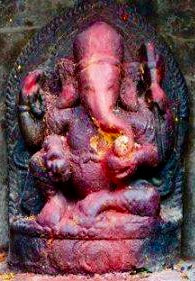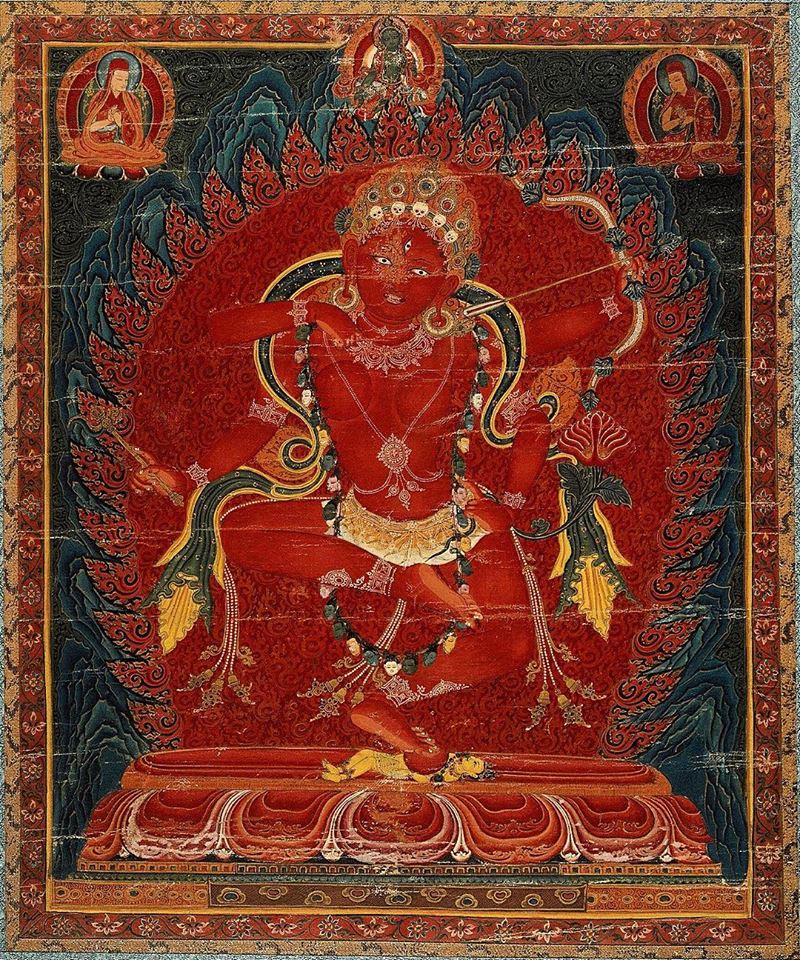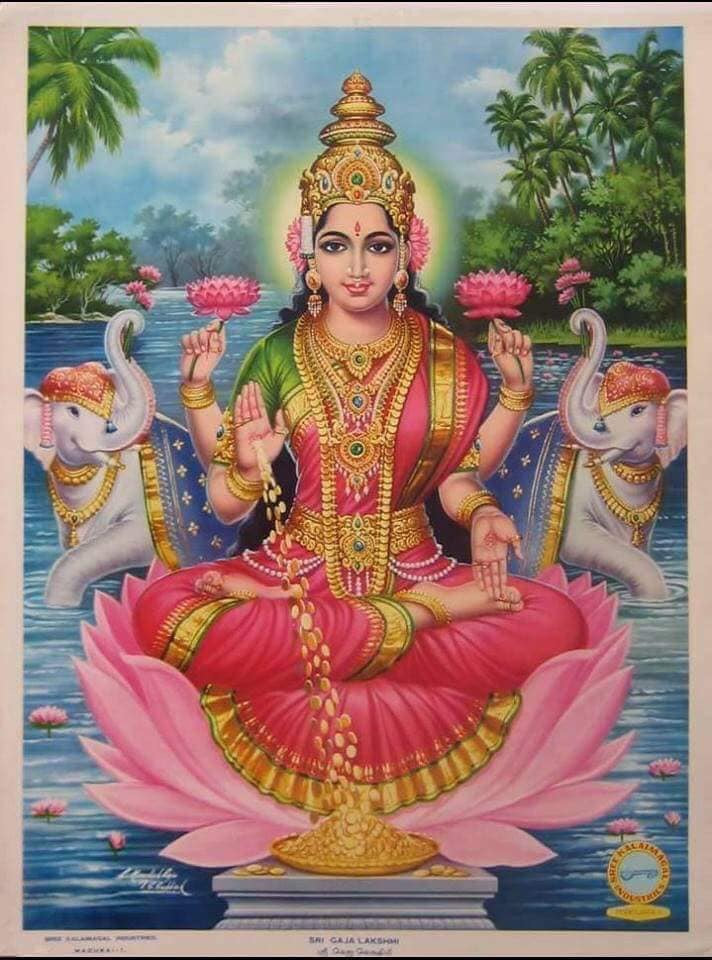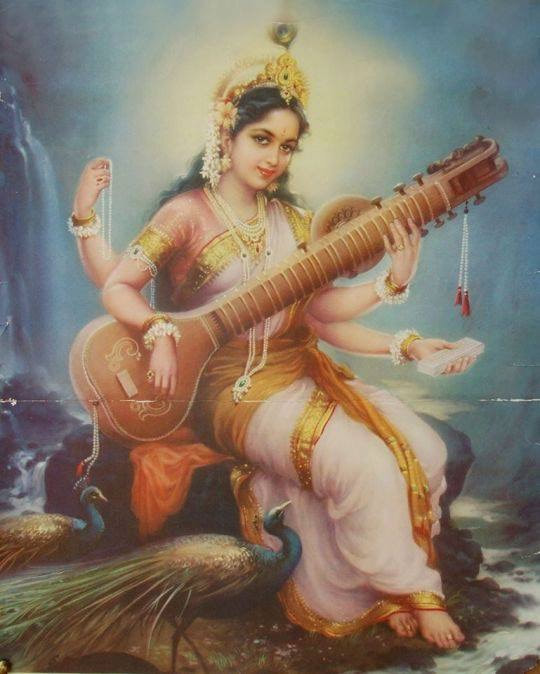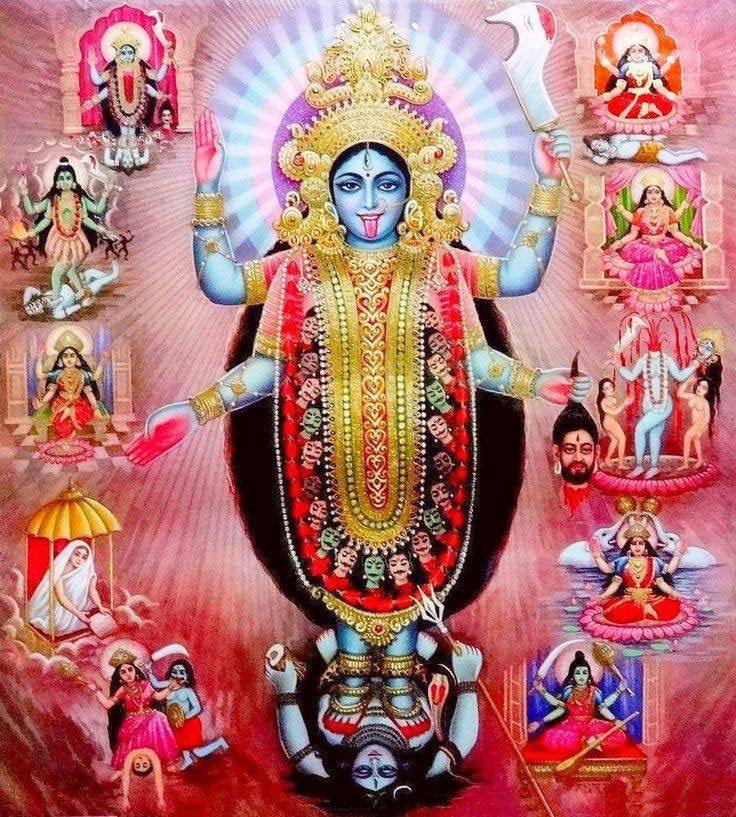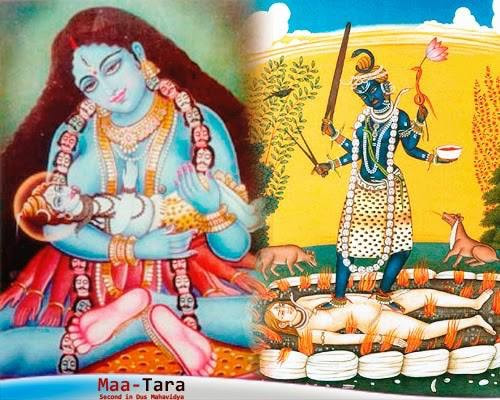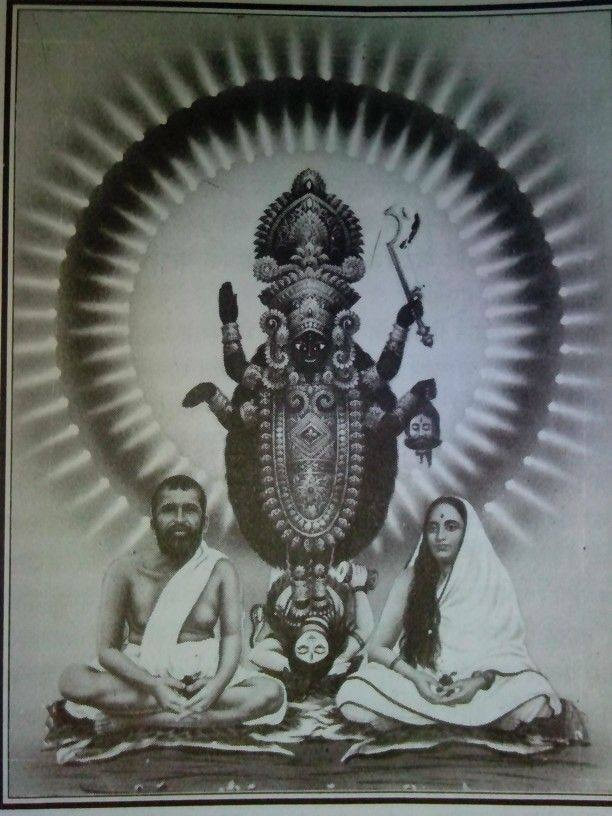
The inner meaning of Bhairavi's name identifies her with the cosmic functions of creation, maintenance, and destruction. Goddess Bhairavi represents transforming heat, ‘Tapas’, and also Divine radiance, ‘Tejas’. Tapas is not just asceticism, it is a heightened aspiration that consumes all secondary interests and attachments. Bhairavi is the transformation that comes with destruction, which is not necessarily negative. She personifies light and heat that can burn away the imperfections in the soul.
Goddess Bhairavi is an incarnation of Goddess Shakti and is a popular deity in Hindu rural folklore and among tantric practitioners. She is the ‘warrior’ Goddess, who with Her power of Divine speech and spiritual fire eliminates all obstacles to the unfoldment of true awareness, just as She destroyed the demon Mahishasura.
Goddess Bhairavi embodies the principle of destruction. She is considered the consort of Bhairava,the fierce form of lord Shiva and is an ever-present goddess who embodies the destructive aspects of the world. Destruction is not always negative, creation cannot continue without it. She is also known as Shubmkari, Good Mother to Good People. Then again she is terrible to bad people.
MAHAVIDYAS: Shaktam is Mother Goddess worship. The Dasa Mahavidyas personify the one Truth senses in ten different manifestations. The Divine Mother Devi is adored in ten cosmic personalities who have their individual roles in the cosmic scheme of creation, preservation and destruction. The Mahavidyas are associated with decay, death, violence, pollution etc. Their roles call into question the bhaktas experience while he stands in a material world struggling spiritual liberation. Bhairavi takes Her slot as the Fierce Goddess.
The major forms of the Mahavidyas are described in the Todala Tantra. Here Bhairavi is shown as ‘Her head garlanded with flowers, she resembling the red rays of 1,000 rising suns, smeared with red, holding milk, book, dispelling fears and giving boons with her four hands, large three eyes, beautiful face with a slow smile, wearing white gems...’
DEPICTION: Bhairavi is usually depicted as having dark greyish red skin, three eyes, and blood smeared on her lips and breasts. She smiles softly and wears a moon on her crown. Her complexion is red similar the thousands of rising-sun, wears smooth clothes and has a garland of heads roughly her collar. She has prominent kundalas, nose-ring, bangles and waistband. Her necklace hangs over her breasts. She wears a jewelled crown. Goddess Bhairavi’s lips are depicted with blood and she has three eyes. Bhairavi holds a book, a rosary. Her mudras are both the abhaya mudra and vara mudhra. Her palms are wet with blood as symbolised by kumkum. She is shown holding weapons such as a trident axe and thunderbolt. Some images shows her wearing a garland of skulls.
She shares with Goddess Durga, the vahana, the lion. This vahana is a symbol of fire or solar energy, from which she wields her weapons of light to kill the demons or negative forces. She is believed to reside in Patal, the netherworld. The depiction in the North slightly differs from the South. In Northern tradition, she has sunken eyes, shrivelled breasts, unkempt hair and shown in an ecstatic mood. Southern depiction portrays her as voluptuous, rounded breasts, small waist, wide hips, with fangs and in a ferocious mood. Generally she is of wild personality in the South art depictions. But she is also shown in her calm seated position to conceal her ferocity. This pose is not to be mistaken!
MYTHOLOGY: It is believed that when Goddess Bhairavi entered the battle field, her horrible appearance made the demons weak and very feeble, and the most of the demons started panicking as soon as they saw her. In Durga Saptashathi version of slaying powerful demons Shumbha and Nishumbha, Goddess Bhairavi is seen mainly as the goddess Kali. Goddess Parvati gave her a boon of being called Chamundeshwari when she killed and drunk the blood of Chanda and Munda.
CREATION AND DESTRUCTION are two essential aspects of the universe, which is continually subject to their alternating rhythms. The two are equally dominant in the world and indeed depend upon each other in symbiotic fashion. Bhairavi embodies the principle of destruction. She arises or becomes present when the body declines and decays, which is a natural, inevitable, and irresistible force. Bhairavi is also evident in self-destructive habits, such as eating tamsic food (food having a quality associated with ignorance and lust) and drinking liquor, which wear down the body and mind.
She is present, it is said, in the loss of semen, which weakens males. Anger, jealousy, and other selfish emotions and actions strengthen Bhairavi's presence in the world. Righteous behavior, conversely, makes her weaker. In short, she is an ever-present goddess who manifests herself in, and embodies, the destructive aspects of the world. Destruction, however, is not always negative, creation cannot continue without it. This is most clear in the process of nourishment and metabolism, in which life feeds on death; creation proceeds by means of transformed energy given up in destruction.
KALARATHRI: She is one of the most ferocious forms of Goddess Shakti and is equated with the Kal Bhairava form of lord Shiva. Thus Bhairavi is also identified with Kalaratri, one of the fiercest forms of Durga. Her appearance evokes fear. Kalarathri means the Death of Kaal or Time. She also means ‘black night of destruction’ referring to a particularly destructive aspect of Kali.
Kalarathri is identified with Mahapralaya. She is the force that tends toward dissolution. This is the great dissolution at the end of a cosmic cycle. All things, having been consumed with fire, are dissolved in the formless waters of procreation. The human microcosm is Bhairavi herself. The human grows, progressively ages, the body weakens and finally ends as ashes. Therefore destruction is everywhere and following that premise Bhairavi is also everywhere.
CHATUHSASTHI YOGINI. Refers to 64 Yoginis. This was a mystical female cult of the 9nth century. The purpose of the cult was to develop supernatural powers. They considered themselves as servants of Mother Divine. They were devotional in nature. It is said that they had tremendous supernatural abilities. These yoginis are linked to black tantrism but that hardly makes them witches! Their central focus of worship was Bhairavi, Kali and Shiva Bhairava. They used destructive energies of Kali or Bhairavi with goal to come to the positive end.
There is an ancient Yogini Temple at Hirapur. Here, the principal Goddess of the Yoginis was Mahamaya, as used in the Devi Bhagavatam. The difference between Kali and Bhairavi is that Lord Shiva is particularly extremely wrathful as the Bhairavi’s consort but his wrathfulness is not seen so tremendous as the Kali’s consort. Thus it brings a notion that Bhairavi is thus the fiercest form of Mother Divine.
Kaula Marga or the Path of Time practice identifies tantric practices associated with Goddess worship. Bhairavi is experienced in her wrathful form in a practice known as Bhairava Chakra. Yoginis of different categories are included in the chakra or circle of experience. The sadhana or ritual involves the 5 M’s: Matsys – dish, Mamsa – meast, Mudra – parched grain, Madya – alchoholic drink and Maithuna – sexual intercourse. Maithuna or sexual reference in Tantra is either a physical act or a secret code, which particulars should be sought from a guru.
TANTRA and KUNDALINI: Bhairavi is dwells in the Muladhara or Root chakra, and is the same as Kundalini. Bhairavi represents the successful aspirant of Tantra. Thus the title Bhairavi is bestowed upon a Kundalini Tantra Yogini. It presupposes that the yogini is beyond fear. In Hatha-Yoga-Pradipika, Bhairavis are yoginis who preserved their genital emissions or their rajas and contain the bindu, the male semen in a practice called Vajroli-mudra. Its reverse is practiced by the yogis.
In the Kalika Purana, the names Kali and Bhairavi are interchangeably used. She appears as the consort to the wrathful Shiva Bhairava when they are in Maithuna or the Great Rite of sexual union. There is another tradition of calling virgin girls Bhairavi when they are worshiped as goddesses in tantric rites. The Tantric worship of the Vidyas must be practiced under the guidance of a Siddha Guru. Hindu Tantra siddhas are the followers of the Mother Goddess view all girls and women as visible embodiment of Her. Mystical powers or siddhis and spiritual liberation are bestowed by Mother Goddess if one sees divinity on women.
Bhairavi is Kundalini. In her individualised aspect and the power of consciousness dwelling in us. Her power appears overwhelming at both the cosmic and individual level. The innate capacity to realise the Divine lies latent and unfolds through a guided spiritual path. We start seeking by a conscious effort. Once discovered, it causes us to see the world in a new light.
AGHORIS revere Bhirava and Bhairavi in Siva temples. They are also found in the proximity of smouldering funeral pyres. They stand as wrathful forms of Shiva and his consort Parvati represented by a stone boulder with a wrathful face painted upon it, and a trunk of wood painted with the three eyes of the goddess. In front of their shrine are three skulls, which represent Shiva's mastery over the three gunas. In front of the aghori is a female jackal, who serves as the 'messenger' or emissary of Smashan Tara - 'Tara of the Cremation Grounds'. Behind the jackal is a wrathful lamp fashioned from an upturned human skull. The skull rests upon a square block representing the element of earth, and is fuelled by human fat and a wick twisted from the hair of a corpse. From the flames of this lamp arises the symbol of a tantric staff or khatvanga, which is fashioned from a small skull mounted upon a handle of human vertebrae. At the top of this skull-staff is a flaming iron trident, which symbolizes the goddess's victory over the three realms, beneath, upon, and above the earth, three times past, present and future, and three poisons, ignorance, desire and aversion.
Goddesses are revered as they are simply love. Bhairavi has her rituals and those not given to tantra perhaps may focus on the milder goddesses. But then Goddesses are goddesses. There is a world of difference between fire from a matchbox and forest-fire.
Om Bhairaviye Namaha.
By Yogi Ananda Saraswathi
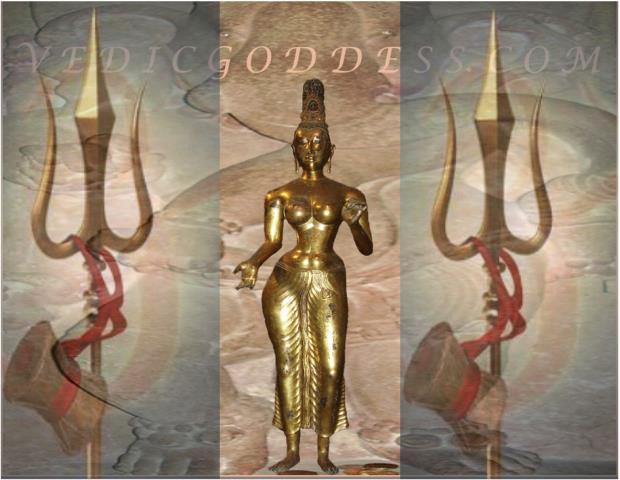
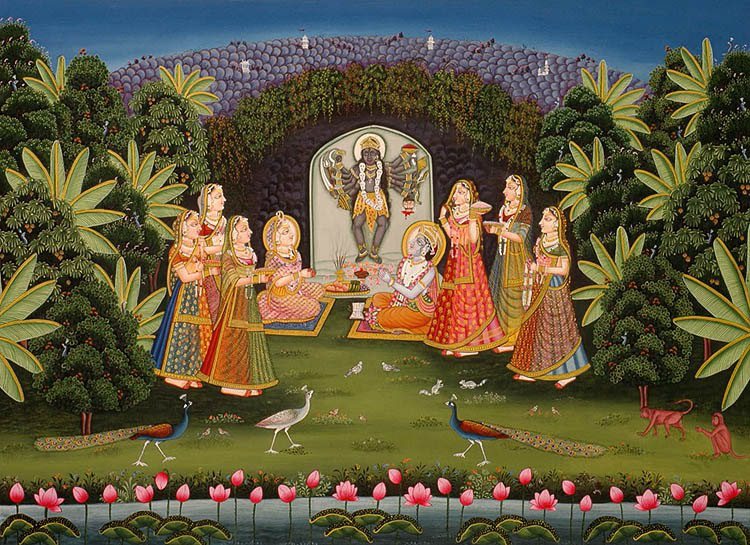
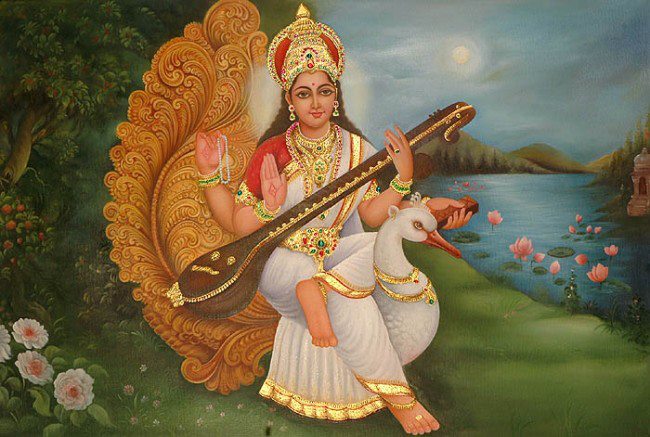
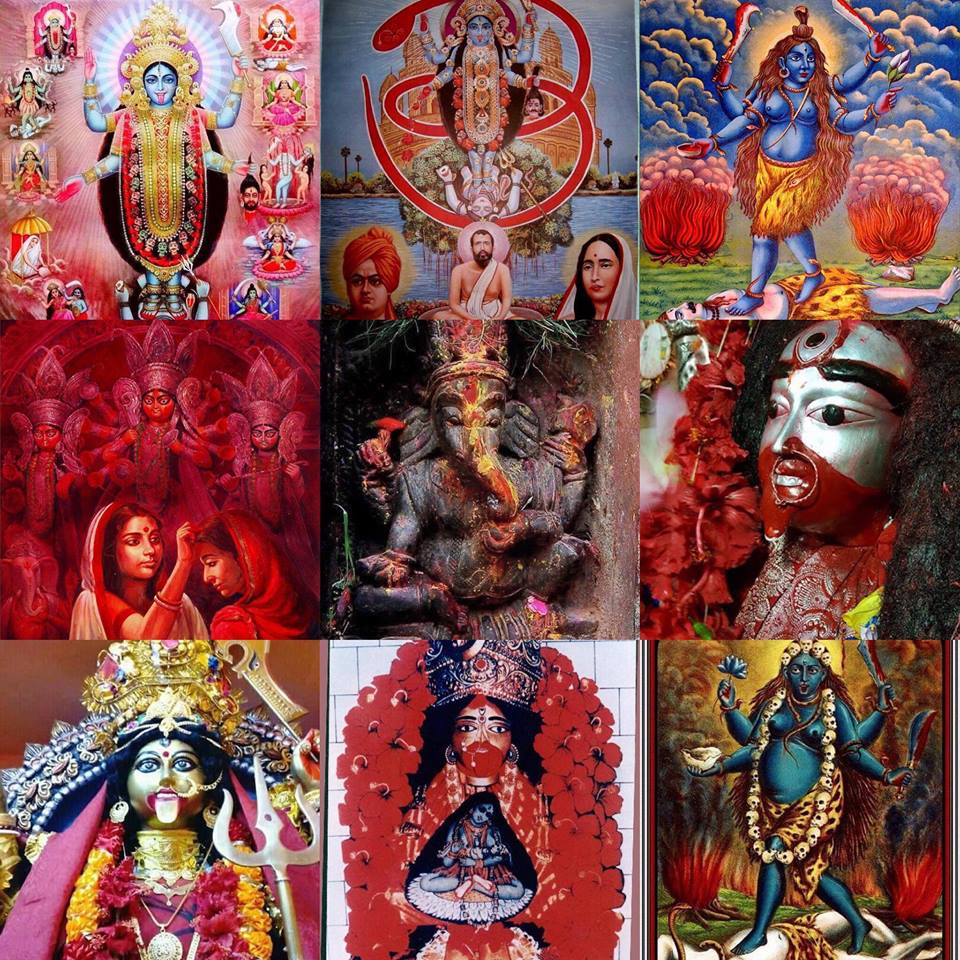
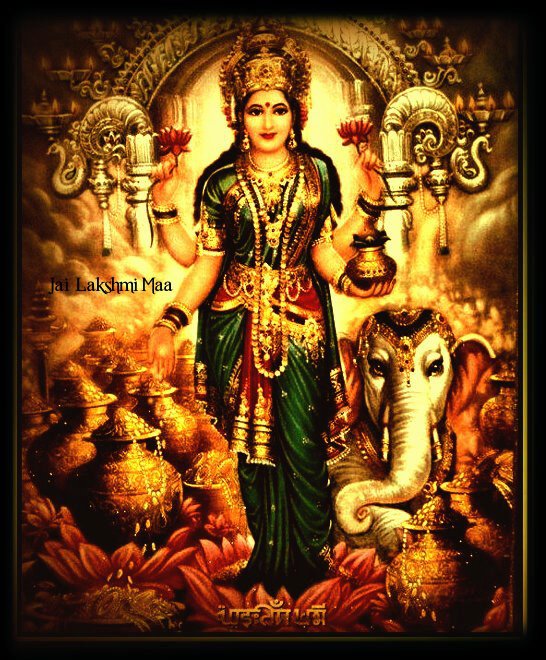
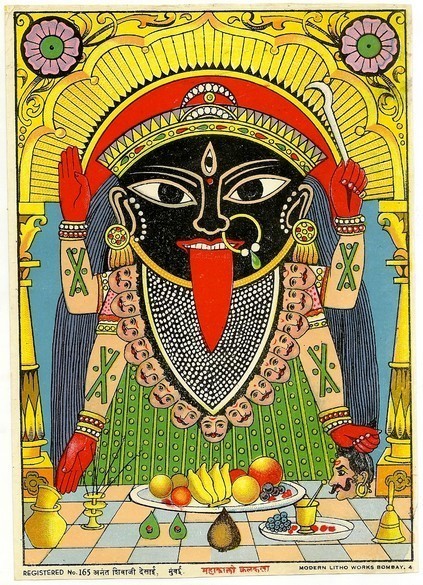
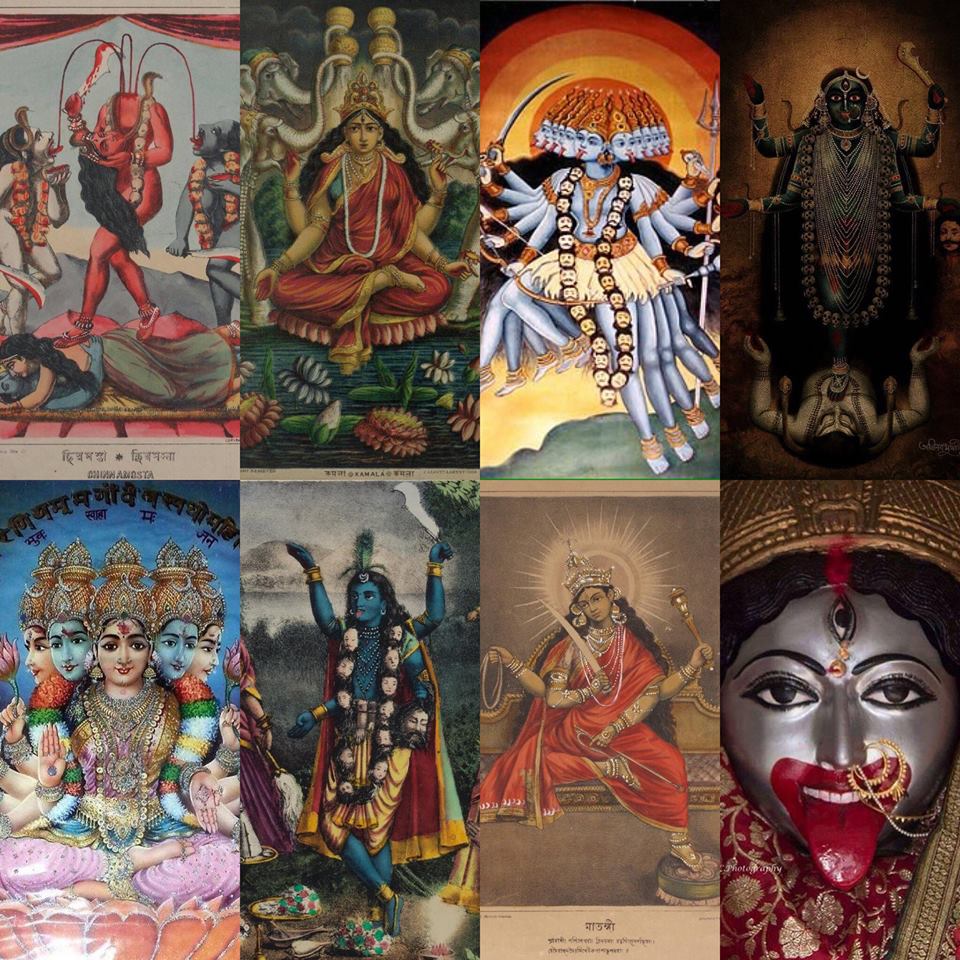
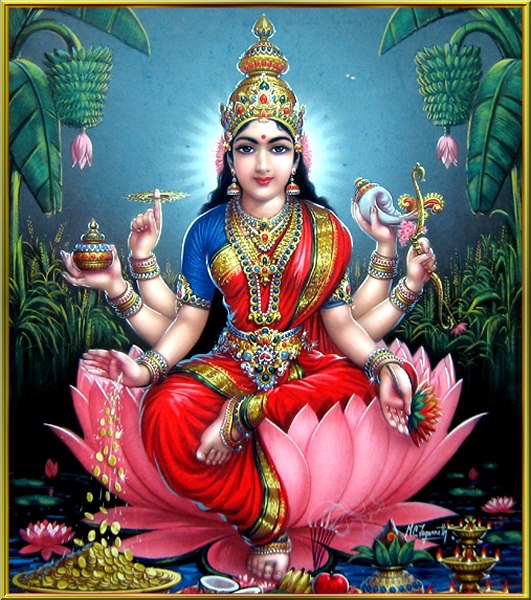
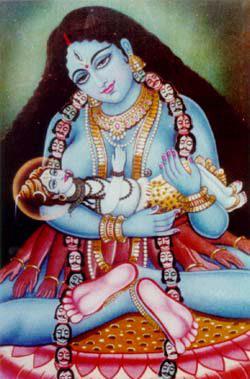
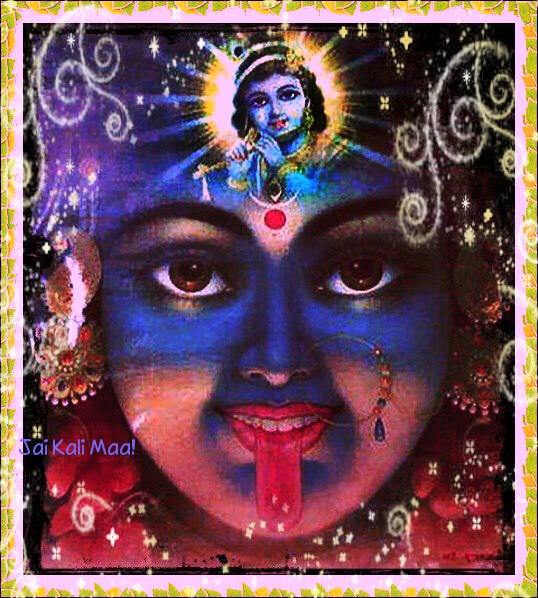
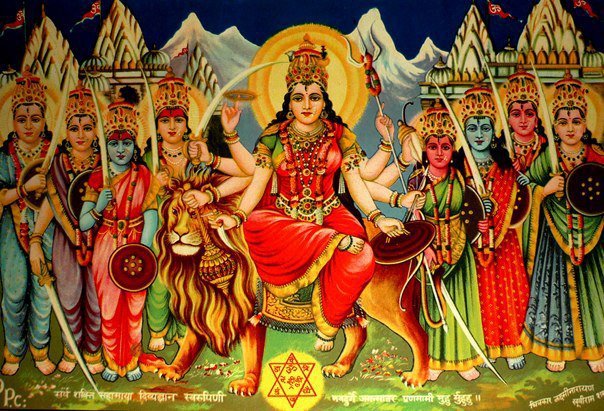
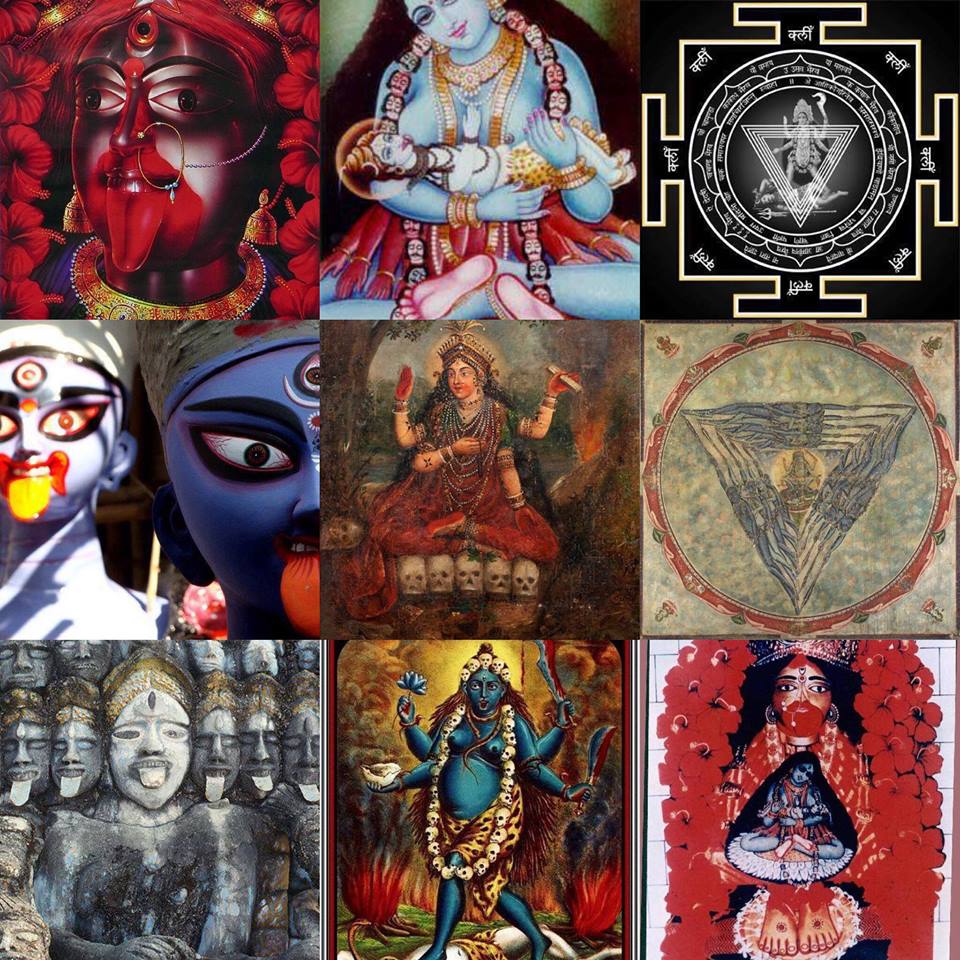
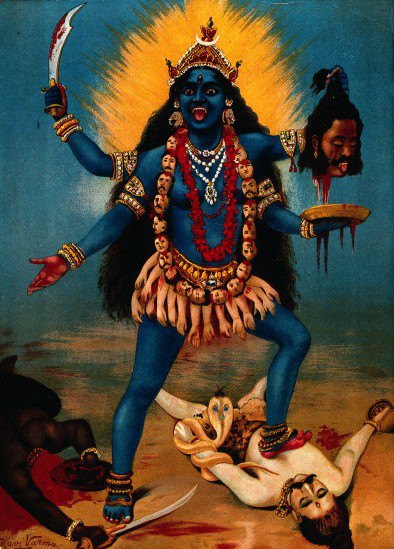
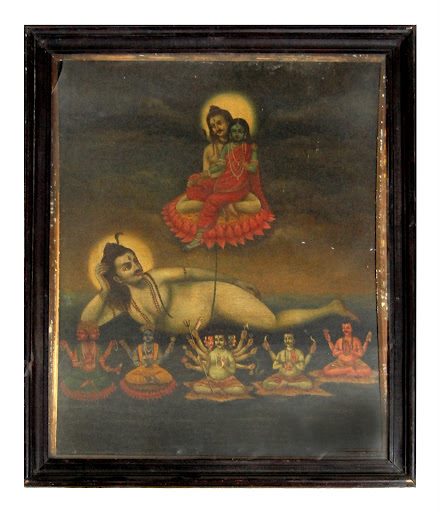
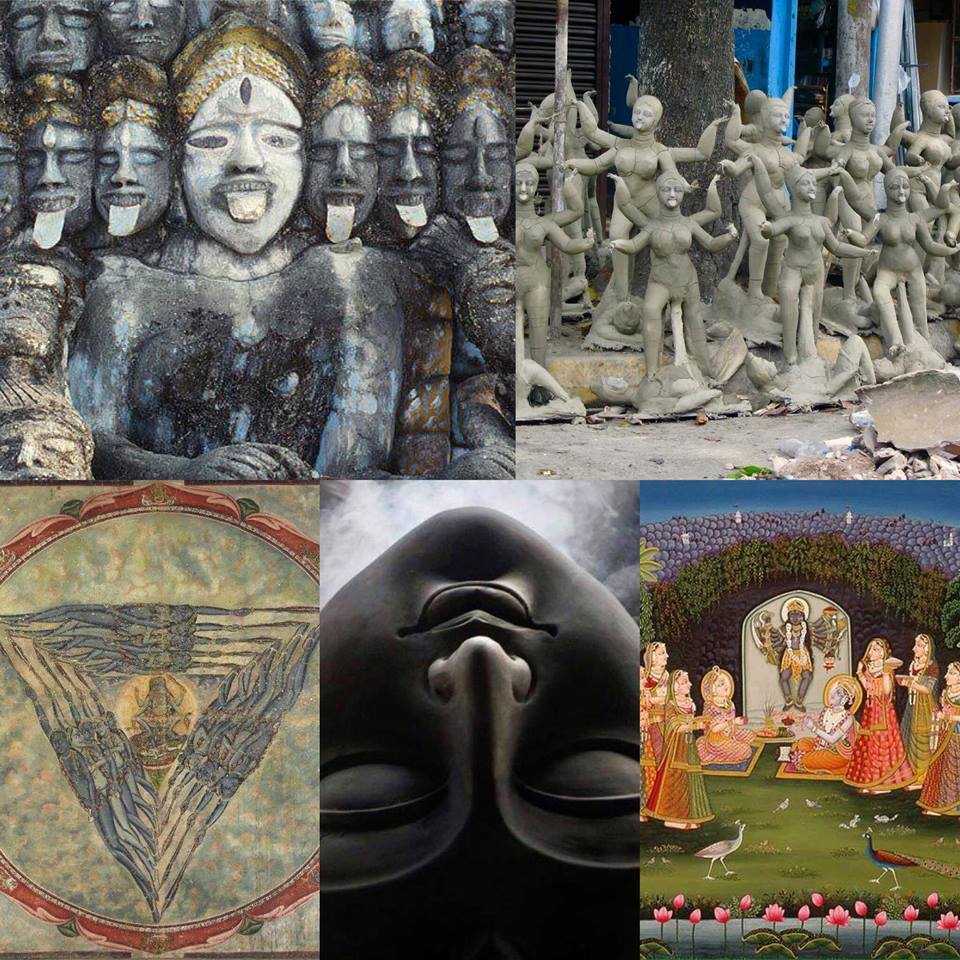
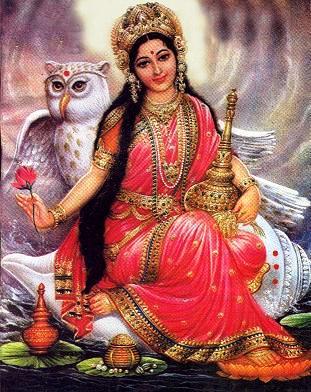
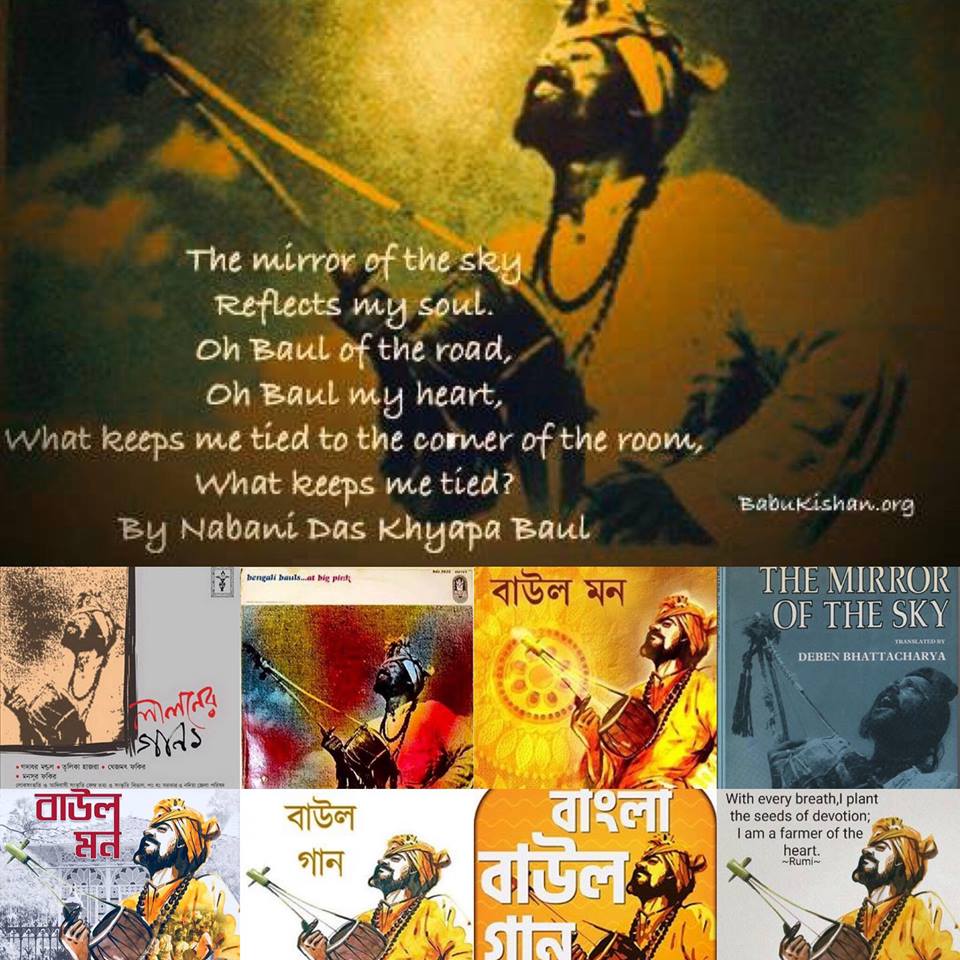
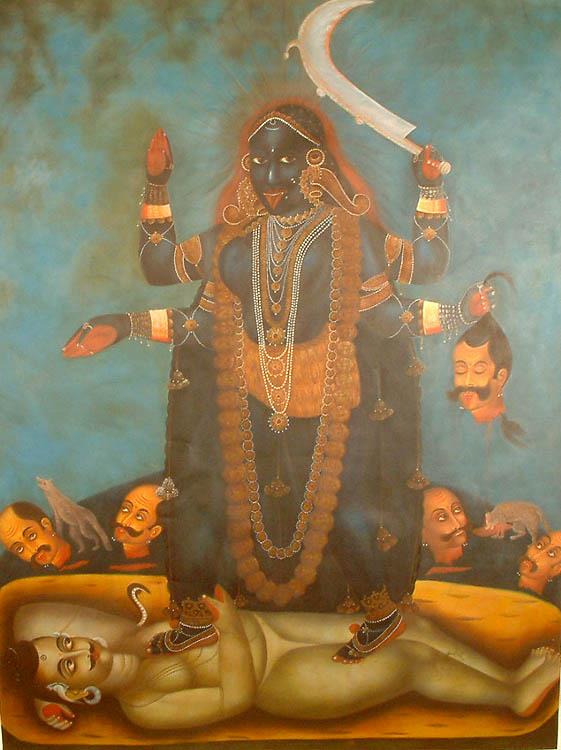
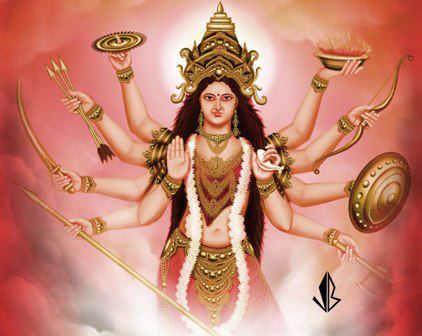
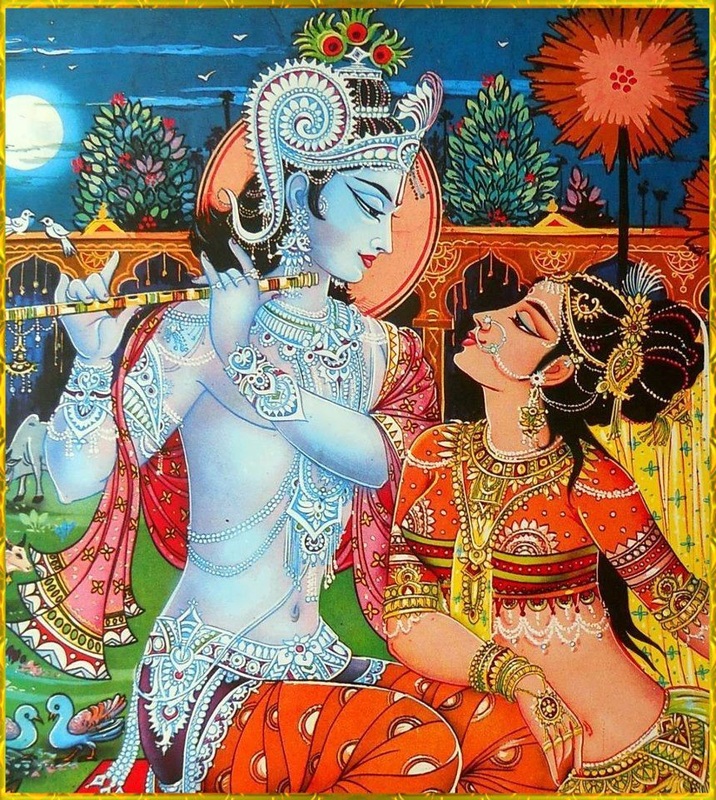
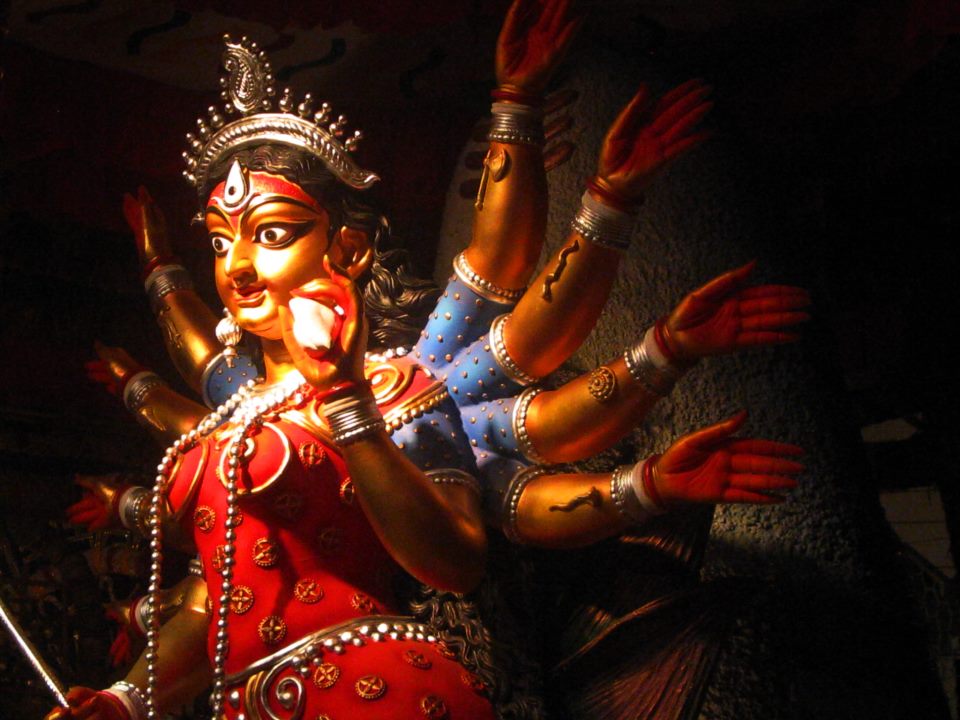
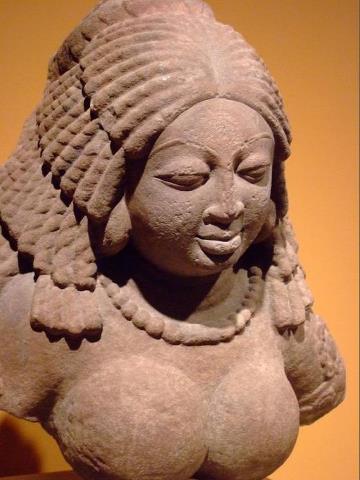
 RSS Feed
RSS Feed


